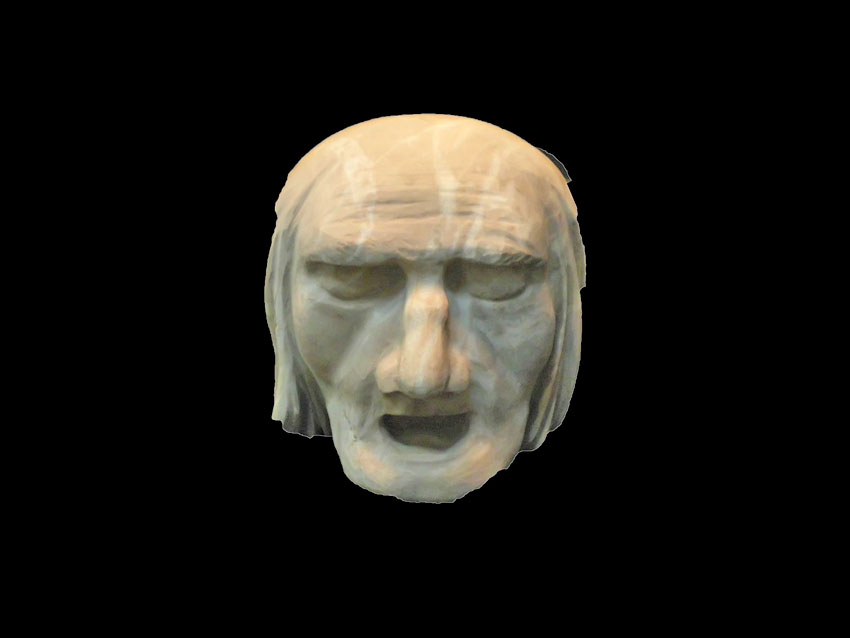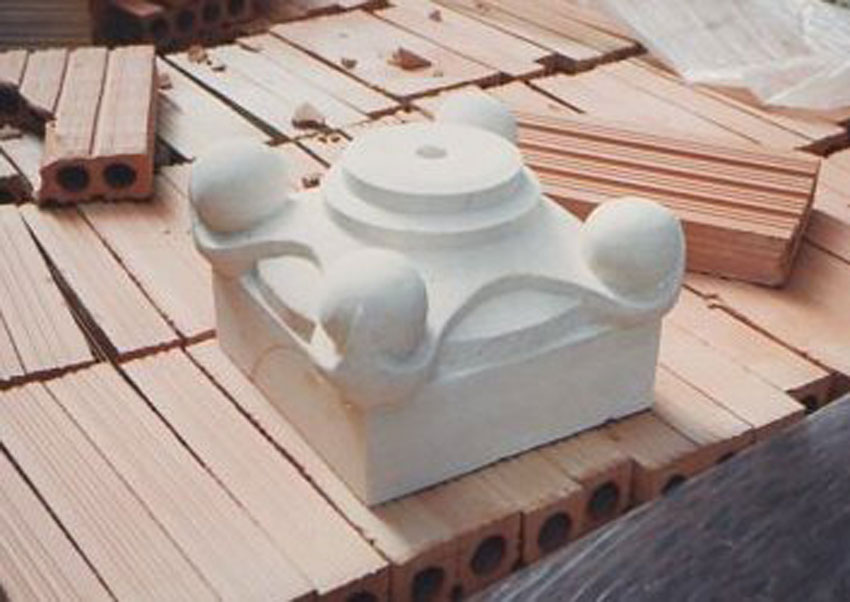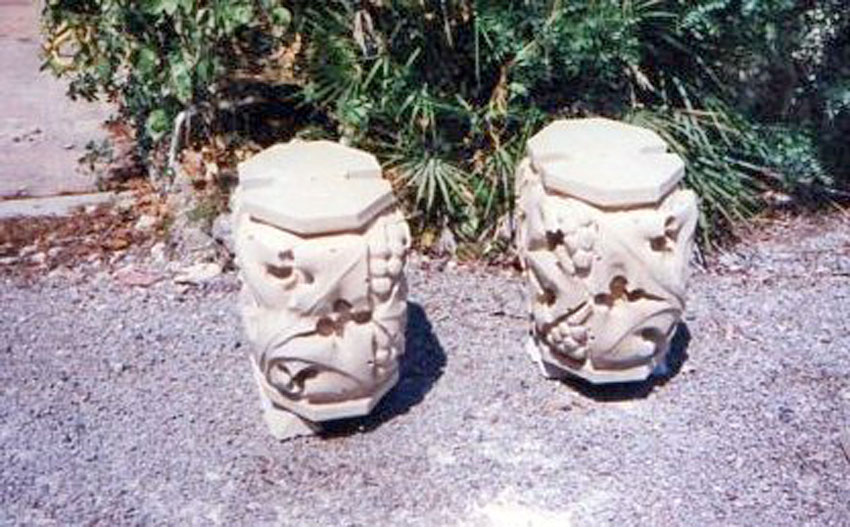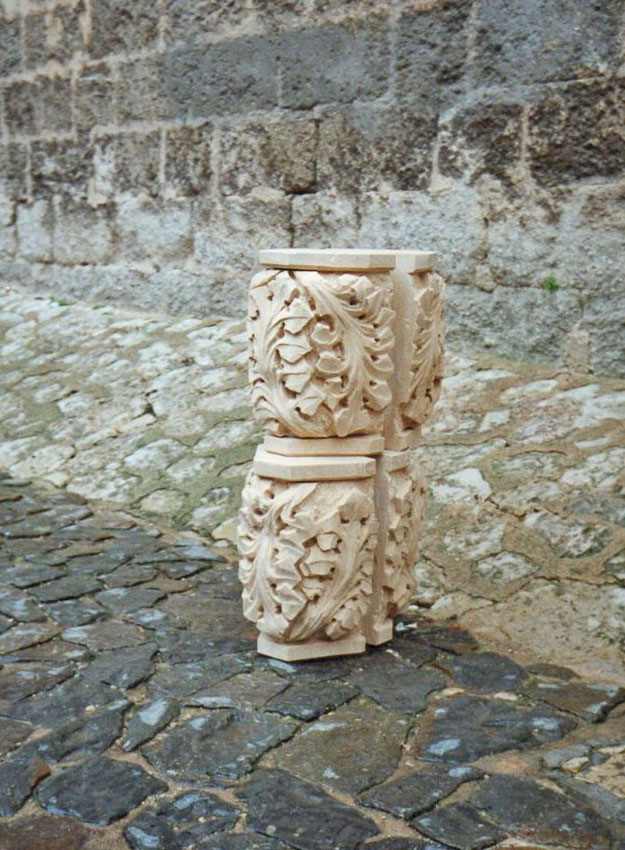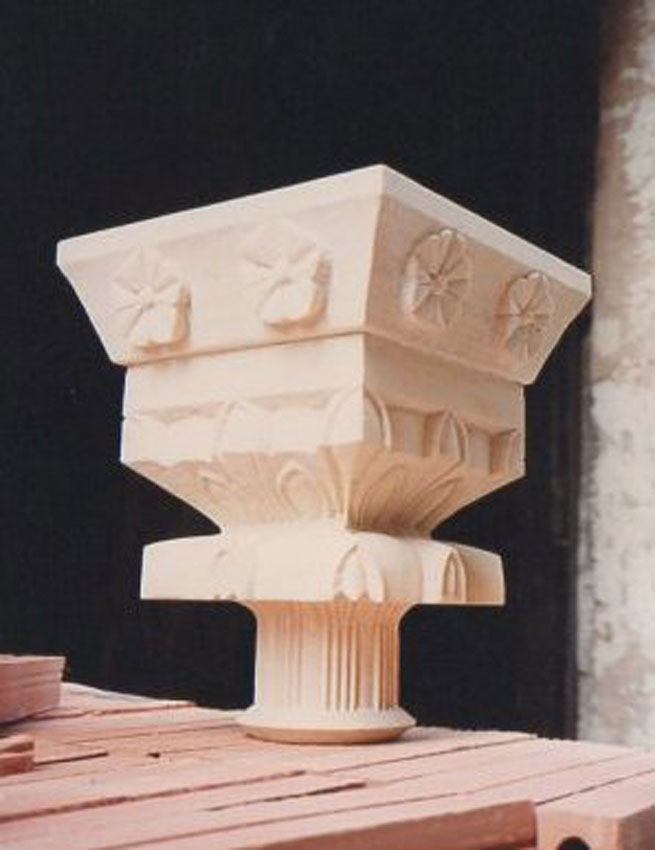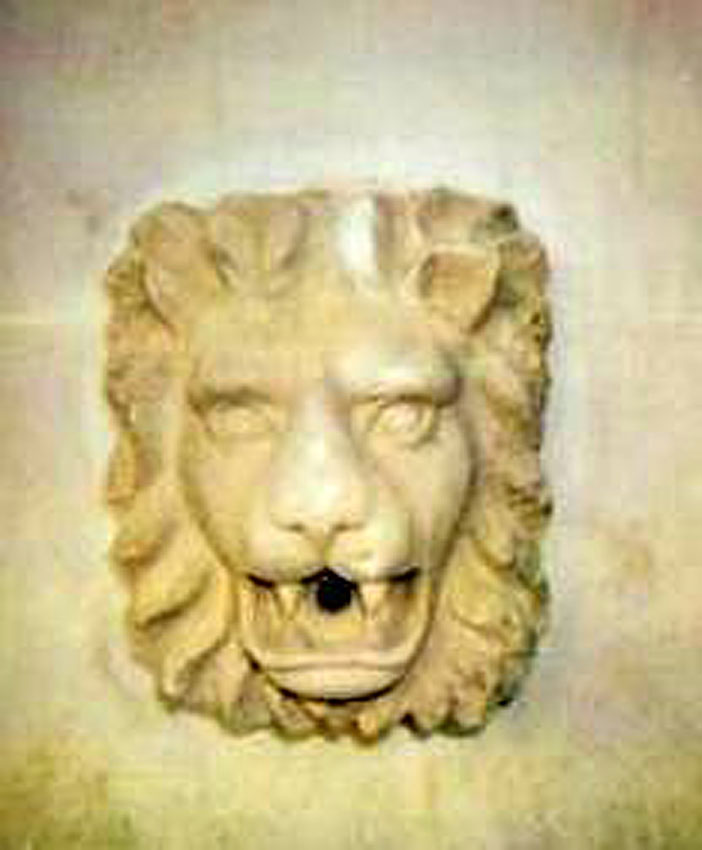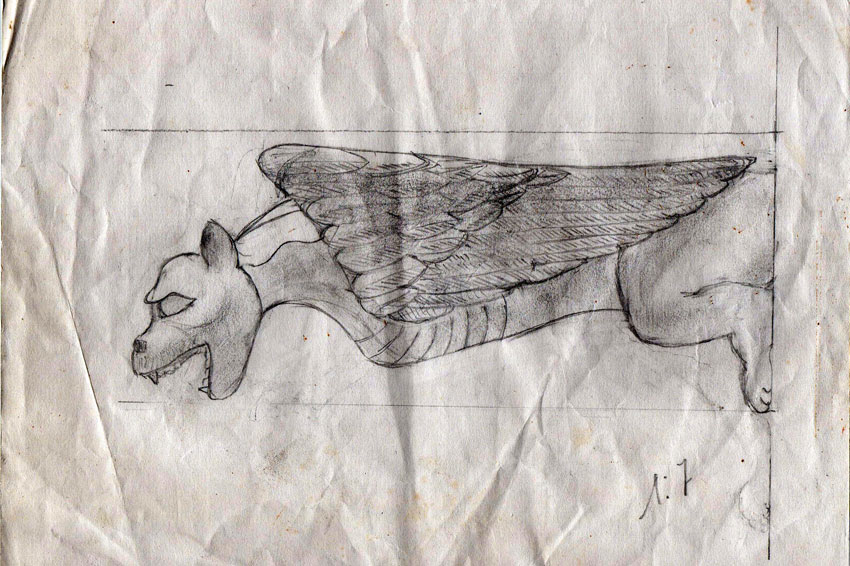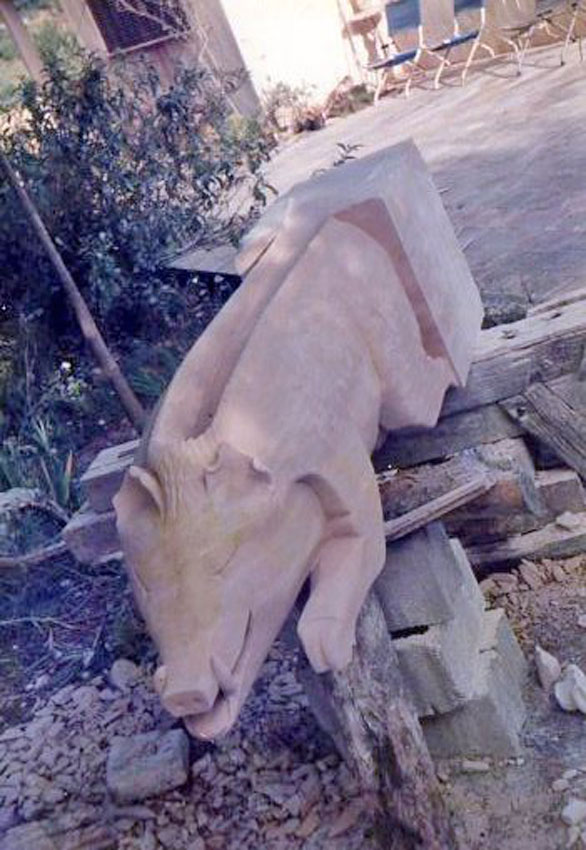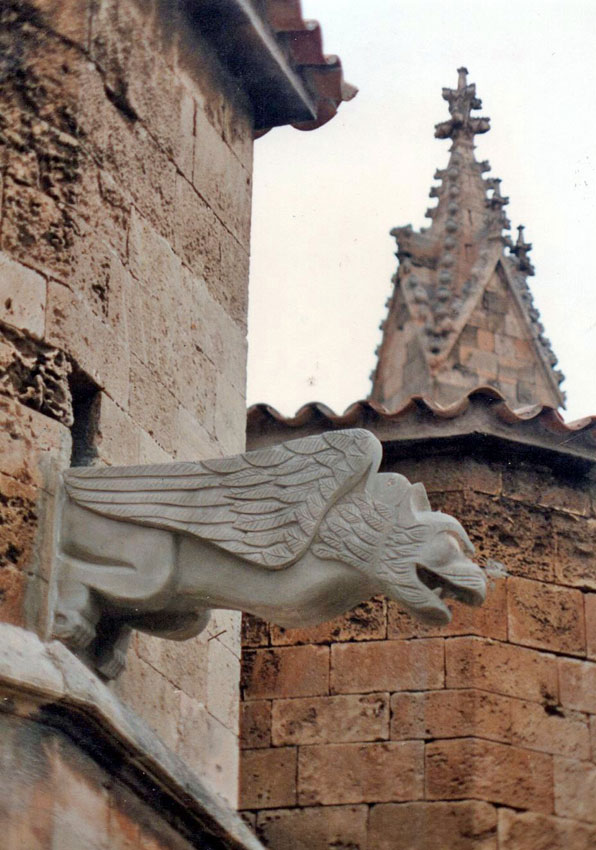When Gothic as a style came to an end, the Gothic gargoyle lost interest, with the result that the representation of the fascinating creatures decorating them began to be abandoned and, although we still have superb late Gothic, Renaissance and Baroque gargoyles, in general the focus shifted to simple geometric spouts, sometimes with some ornamentation, made of metal or stone.
However, this disinterest did not last indefinitely. In the mid-19th century, a number of architects, including Viollet-le-Duc, revived these figures in a new style: neo-Gothic. This was also influenced by Romanticism and Gothic literature. In this way, Gothic as a style received the importance and appreciation it deserved and gargoyles enjpyed a comeback. These neo-Gothic gargoyles generally recapture and recall the medieval ones, but also incorporate more modern figures, adding the imagination of the new artists of the 19th century.
The development of the gargoyle in the 19th century has undoubtedly led to the projection it has had in the 20th and 21st centuries. Today, gargoyles continue to be sculpted for all kinds of buildings (churches, palaces, universities, museums, private houses, etc.). Gargoyles have continued and continue to be of interest today. Their representation and attractiveness have also spread to other arts. Apart from literature and painting, they have also found their way into cinema, video games, animation, comics, etc.
Reflections on the Art of Sculpting
Today we invite you to a new article dedicated solely and exclusively to the craftsman, the creator, in short, the artist. The gargoyle sculptor.
As we have always said when talking about gargoyle sculptors, gargoyles reflect the creative freedom of these sculptors and their unlimited imagination. The infinite combination of shapes and beings suggests an extraordinary and enviable freedom to carve into the stone multiple creative possibilities, sometimes overflowing and even daring.
Some time ago we had a talk with the sculptor José Miguel Abril, in which we were able to be in his workshop and enjoy his knowledge and work.
Today we are lucky enough to be able to interview another magnificent artist, none other than the sculptor of some of the Mallorca Cathedral gargoyles.
We are talking about Joan Roig, sculptor.
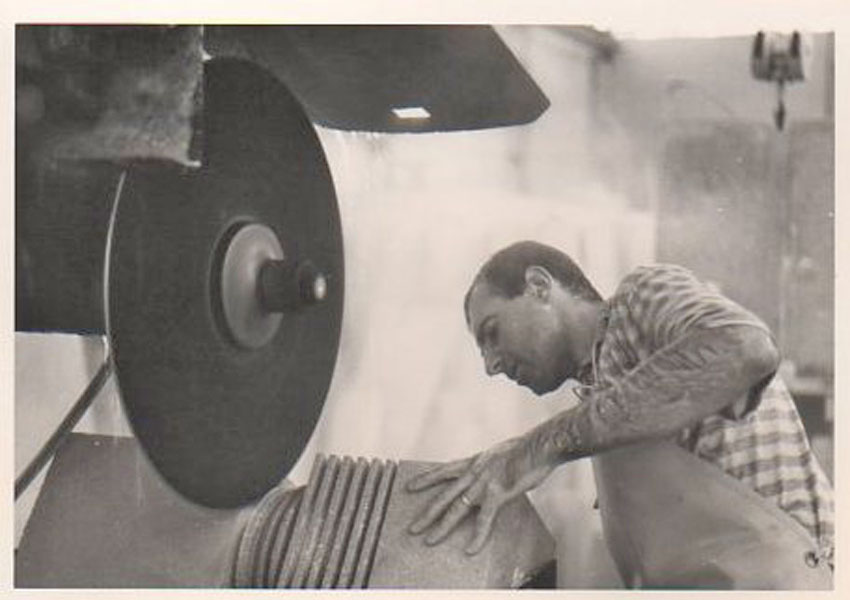
Joan Roig Vélez
Sculptor
After completing secondary school and COU, Joan Roig Vélez (Palma de Mallorca, 1964) began to work by chance in a marble shop in 1982. It was there that he began his self-taught training in sculpture.
In 1991, his company was commissioned to supply the masonry elements for the restoration of the exterior of the apse of the Mallorca Cathedral, and he was in charge of carving three large gargoyles, in blocks measuring 200 x 70 x 50 cm.
From that moment on he began his exclusive career as a sculptor of both religious and civil works. Apart from the aforementioned gargoyles, the following works stand out: Eleven capitals for the stained-glass windows of the Mallorca Cathedral; restoration of the four lion-shaped effigies of the Born in Palma; restoration and new copy of the last preserved Gothic Goig of the Lluc Monastery; Creu de Terme of Son Sardina in Palma; Gothic Virgin for the restoration of the repopulation Son Vives church in Sant Llorenç des Cardessar; a stone copy of the Gothic wooden image of Sant Nicolauet in the Museu de Mallorca; a gargoyle in the shape of an old man’s human head in Can Oliver in Palma; restoration and carving of Gothic capitals in the house attached to the Mallorca Cathedral in Palma; and the restoration of the completely mutilated stone image of Ramón Llull in the Cura Monastery in Randa.
The Experience Behind the Work
What inspired you to sculpt your gargoyles?
When I was commissioned to sculpt the gargoyles, I already knew the Cathedral of Mallorca quite well, but the diocesan architect Sebastián Gamundí recommended me: you go up to the cathedral´s terraces and walk around and take notes of the gargoyles made so far. And that’s what I did. At that time it was not yet possible to visit the terraces in the cathedral, and for me to be able to go up there frequently to walk alone, on the terraces, surrounded by gargoyles, pinnacles, flying buttresses and stained-glass windows was like a journey into the past. Although cathedral´s past is a very long past, because the Mallorca Cathedral of began to be built very soon after the conquest of the island by King Jaume I, in 1229, and although it is not finished at present, it was considered finished in 1601. The bell tower is not finished and there are still many pinnacles and some stained-glass windows to be opened. Once I had ‘soaked’ myself well in the Gothic of Mallorca Cathedral, I made 7 or 8 designs for gargoyles, and Sebastián Gamundí chose two, which were the ones that were made (he had previously carved one in the shape of a sow that appeared in the restoration plans, which was a schematic drawing of his). Don Sebastián Gamundí was as good an architect as he was a good person, and he fully respected the advice of professionals. For me he has been a point of reference.
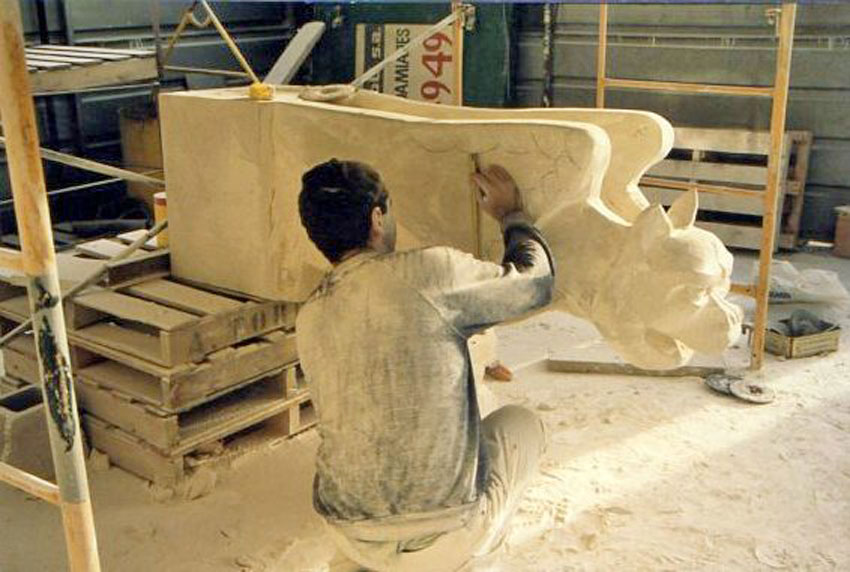
Is there any sculptor or artist who has influenced you?
In Mallorca we had a genius of Gothic architecture and sculpture: Guillem Sagrera. Mallorca Cathedral stands out more for its architecture than for its sculpture, a very austere cathedral and architecturally of exceptional lightness. The height of its central nave, at 45 metres, is the second highest in Europe, and the proportion between the diameter of its columns and the volume it houses is a spectacle for its boldness. Gaudí, in his restoration at the beginning of the 20th century, stripped the cathedral of the central choir and moved it to the chancel, giving a visual grandeur to the central nave that makes the dimensions of the nave even more imposing. Personally, when I am inside, I find it impossible for those fragile columns to support those immense vaults. Even so, several times during its construction some of the vaults collapsed; getting so close to the limit sometimes took its toll. In 1851 the biggest earthquake we have ever had on our island was recorded in Mallorca and despite this the cathedral withstood, although it suffered the fall of one of its towers on the main façade and some cracks opened. For this reason, it was decided to reinforce the façade with two large neo-Gothic towers that covered two small rose windows, which is why the current image we always see of Mallorca Cathedral is only 150 years old. The cathedral also has the largest rose window in European Gothic with 13 metres diameter. And returning to Guillem Sagrera, this sculptor has been a milestone in Gothic architecture and sculpture, and he is the author of the belvedere portal, practically the cathedral’s most important sculptural example. Guillem Sagrera was also the builder and sculptor of the Llotja de Palma, a true filigree building with impressive gargoyles and the Ángel de la Mercadería, sculpted by himself. To speak of Gothic sculpture in Mallorca is to speak of Guillem Sagrera, and he is always a point of reference when it comes to finding inspiration. Likewise, many anonymous sculptors, the authors of those gargoyles I was inspired by, those who worked in the cathedral of Mallorca whose names have not transcended, have also been a very important point of inspiration.
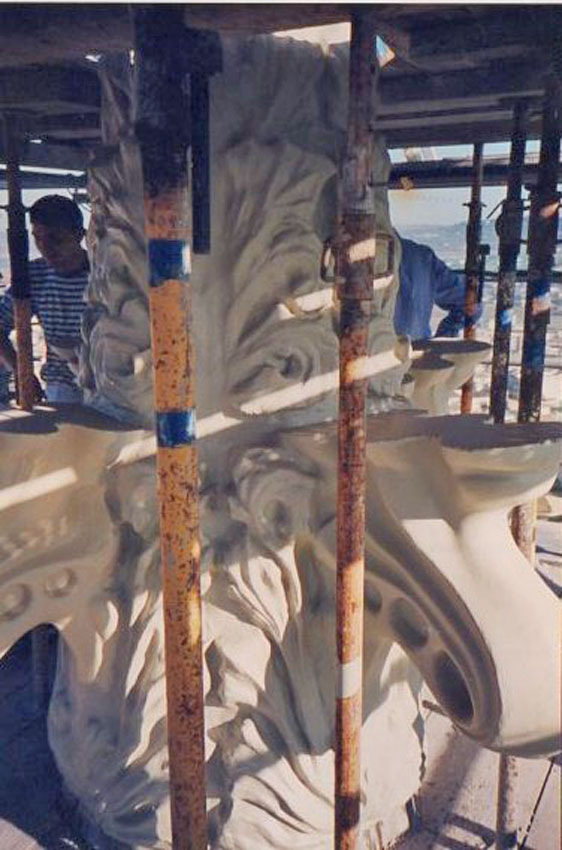
Could you describe your creative process from the conception of a gargoyle to its completion?
I don’t usually force inspiration; like a plant, you sow a seed, and time does its work on its own. As I said earlier, I soaked up the cathedral, and when those stimuli had matured in my head, I picked up pencil and paper and began to draw. As I have also said before, once Sebastián Gamundí had chosen two of the designs, I went to the quarry and together with the stonemason who worked it, we chose the ideal blocks measuring 200 x 70 x 50 cm to make them. In addition to a visual inspection, the blocks are sounded. They are struck with another piece of stone and if it rings a bell, the block is sound; if it has a crack, even if it is not visible, the stone does not ‘sing’. Once I had chosen the block, I made a small sketch of the head of one of the two gargoyles in clay, a sketch that I still have, but the carving was direct, I did not prepare a sketch of the sculpture and then draw dots on the block, I simply drew it on the faces of the block and removed what was left over. They attribute to Michelangelo the phrase that he did not make the sculpture, that the sculpture was already made and that he only removed what was left over. It is very easy to attribute phrases to famous people, possibly 90% of the phrases attributed to great figures have never been said; any sculptor in stone or wood who makes a subtractive sculpture, what is attributed to Michelangelo, has thought about it a thousand times. To remove to the exact point, without going too far; that is the secret. Additive sculpture, such as clay sculpture, is another story. And it must be said that sometimes there are mistakes, either because you have gone too far, or because the invisible, inner cushion of the stone coincides with the eye, or that dark vein crosses the face from top to bottom like a scar. Murphy also exists in sculpture. In such cases there is no choice but to try not to discard the work done and to reproject the sculpture, because when I sculpt there is a little trick, such as never closing oneself off. That means that, for example, if I’m sculpting a head, I will never sculpt the back part without having the front part finished. That way, if a problem arises, I will always have stone in the back to rectify it and put the whole sculpture ‘backwards´. Another trick I usually do is to carve one side of the sculpture first, so the symmetrical one is much easier to do if you have a finished side because you only have to copy it, both in the shape and in the measurements. And once you have finished carving, the last thing to do is to polish to remove the marks of the tool with which you have carved, although I don’t like too much polishing either because I consider it very interesting to see the marks of the tool with which you have worked the stone. And so we make it easier for scholars 300 years from now (he comments with a smile).
How long did it take, more or less, to sculpt a gargoyle?
The gargoyles were carved out of a block measuring 200 x 70 x 50. Of those 200, approximately 150 were visible and 50 were embedded in the wall. As far as the carving was concerned, I spent about a week on each gargoyle.
How did you decide on the theme or figures for your gargoyles? Did you follow any symbols or ideas?
The first one was a sow because there was a sow drawn on the restoration plans; the other two were a winged dog and a winged cat. As it was a pair, and they were in two symmetrical buttresses, I considered that the dog and cat were a pair that were as opposite as they were inseparable, so those were the best designed and the ones that were chosen to flank the diagonal buttresses of the apse. I think that sometimes too many explanations are sought for very simple things. In some cases there may be a trend or a global idea of the gargoyles aesthetics o of the same building, but I think that sometimes things are not so far-fetched, I think that on many occasions the sculptor had a free hand in the design of the gargoyle, and if for example he had seen a design in another place he visited, perhaps 1,500 km away, which he found amusing, he would repeat it in the place where it was. In the Cathedral of Mallorca, a gargoyle has nothing to do in theme with the one on the next buttress. I think that possibly on many occasions the sculptor had good references and a good hand, and that authorised him to sculpt the gargoyle in the shape that occurred to him at the time and that fitted the style.
What tools did you use to sculpt them?
I have always said that anything that can make dust on a stone can be considered a tool and, although there are very classical sculptors who avoid using power tools, this was not my case. I used radials, grinders, milling machines, especially for roughing, although I always used gouges to finish them. The gouge is the tool with which I achieve the greatest perfection in the carving, and it is the one with which I give the final touch. The tools are projections of my hands. And another very important tool is the imagination, being able to see the finished sculpture and, as I said, to remove what’s left over. Controlling volume and space is essential for the sculptor and, naturally, also having a good knowledge of the material you are working with, knowing how far you can go with the blow, knowing where the limit of physics is so that the blow doesn’t break the stone, or how to hit it to obtain the optimum result. And finally, other tools are courage and physical strength. First, the strike has to be accurate, you can’t be afraid in every strike you make, because in the end that hesitation shows in the sculpture. And you also have to have physical stamina. The work is hard; stone-chopping was a condemnation that was often applied.
What would you like to tell people so that they better understand and value the art of sculpting gargoyles?
I think that there is a comfortable art and a hard art. A blacksmith, an iron forger, a stone sculptor or a woodcarver have nothing to do with a painter or a musician. Of course, each art has its difficulty and its merit. When I say comfortable or hard, I mean clean or dirty. A composer, a painter or a designer finishes the day and goes straight to the table for dinner or goes to the cinema. A sculptor must pick up tools, wash, shower, change clothes. Physically it is hard work. Despite the safety goggles and mask, not a day goes by when a splinter or dust gets through the goggles or mask. And going white and unrecognisable is frequent. And that, two days after not touching a tool, you still have mud coming out of the inside of your nose is also frequent. Leonardo used to say that he didn’t want to know anything about sculpture, because sculptors looked like milliners. Or at least the phrase is attributed to him (he comments with a smile). I would like people to appreciate that behind a sculpture there is always a physical work as important as the artistic part. I would also like to draw attention to the fact that there are many sculptors who do not personally execute their sculptures. In the best case they model the sculpture in clay, or in the worst case they don’t even do that, and it is an unnamed sculptor, an anonymous blacksmith or other professional who makes the sculpture. I have seen in a blacksmith’s shop, first hand, three 15 cm high pieces of cardboard glued together so that the blacksmith could make the sculpture several metres high. I think this is nothing new. Many sculptors of the past who have so much work, it was temporarily impossible for them to be complete authors of their works. They would need four lifetimes. They had workshops where there must have been from labourers to journeymen who roughed out the work, and others who polished it. It was the same in painting. If we look for a simile, an architect designs a building and doesn’t touch a trowel at all. And the official who has done the walls is known only to his family. I think that chopping up your sculptures is of incalculably greater value. And people should value that much more, and people should start to sign the works together, both the person who designs them and the person who physically makes them.
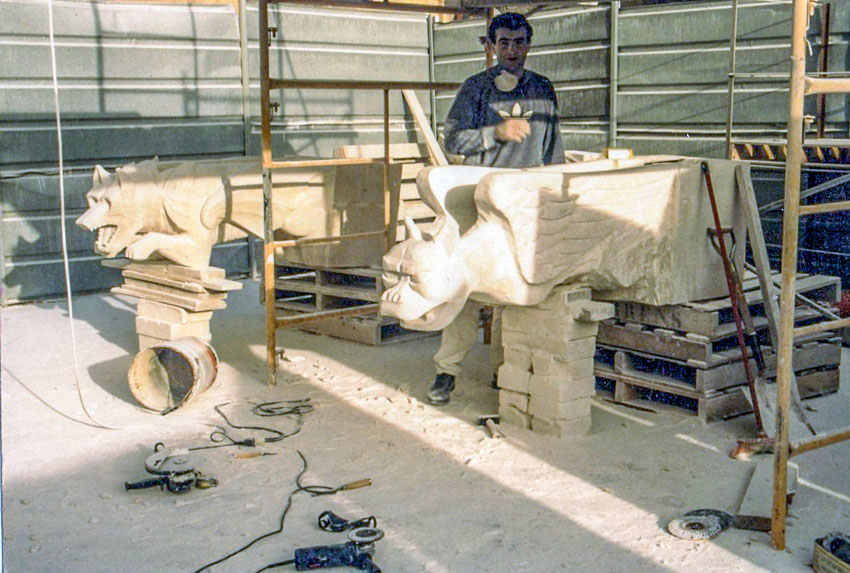
Are there any interesting anecdotes to tell us about your time as a gargoyle sculptor?
The most beautiful was the fact that I was able to sculpt the gargoyles at the foot of the cathedral. Like in the Middle Ages, smelling of art, with the great mass of the cathedral above me, supporting, pampering, protecting, and demanding. A great stony mother full of life and history contemplating my work, awaiting the birth of her two new daughters.
Another anecdote from my time as a sculptor is the number of clients who come to commission works demanding and setting their own price for their commission, without any artistic knowledge, usually an absurdity, and who threaten you by telling you that if it is expensive, you won’t do it. And what’s more, when the sculpture is finished it is not what they thought it would be and they find non-existent faults to reduce the price. This is nothing more than a reflection of what happens in schools, colleges and even universities. If you fail design or drawing, you get a pass to pass the course. But if you fail physics and chemistry, you have no chance of repeating. Degrees such as Fine Arts or History of Art sadly and mistakenly do not have the prestige that degrees such as Medicine or Architecture can have. And this then has repercussions in the little respect and recognition that sculptors, painters, musicians and artists in general have in their day-to-day lives, as it is difficult for them to make a living from their careers. Unless some art dealer has managed to get you to the clouds, always, of course, in exchange for a succulent percentage of your work. For these clients, the best thing to do was the opposite: triple the budget so as not to have any business with them.
And finally, not as an anecdote, but as something unusual, I have been able to do a lot of public works, which besides contributing to the image of my island, has the advantage that, when I want to contemplate my works, I only must go for a walk. And I can’t help thinking that when I see someone photographing one of these works or being photographed next to them, that this person never imagines that the person who is several metres away from them, an ordinary person (which is what I consider myself to be), is the author of the sculpture they are photographing. Once I met a person from a village where I had made a stone carving of a gothic Virgin with the Child Jesus in her arms. I (wickedly), he says with a smile, began to ask her if she knew the place where it was, and I led her to ask her if she knew the Virgin. Fortunately, she did, and she told me that ‘she was very beautiful and that the people had a lot of faith in her’. When I told him that I had sculpted it, he made a face as if he thought that ‘I was taking her’. And, as I said before, sculptors are ordinary people. And besides, as a poem by Tomás Aguiló y Forteza says, stone saints are just that: stone saints. This person’s response is one of the greatest satisfactions of my artistic life.
What is your favourite gargoyle that you have sculpted and why?
In the Mallorca Cathedral, I have eleven capitals from the walled stained-glass windows that were opened, and three gargoyles. And the one I like best of the three is the one with the winged dog. Because, like the cat, I designed it. Because, due to its size, orientation and location, it is the most visible gargoyle in the whole cathedral from the maritime façade, and because, from the point of view of carving, it is the most difficult. In fact, you have it as a gargoyle on the cover of one of your videos.
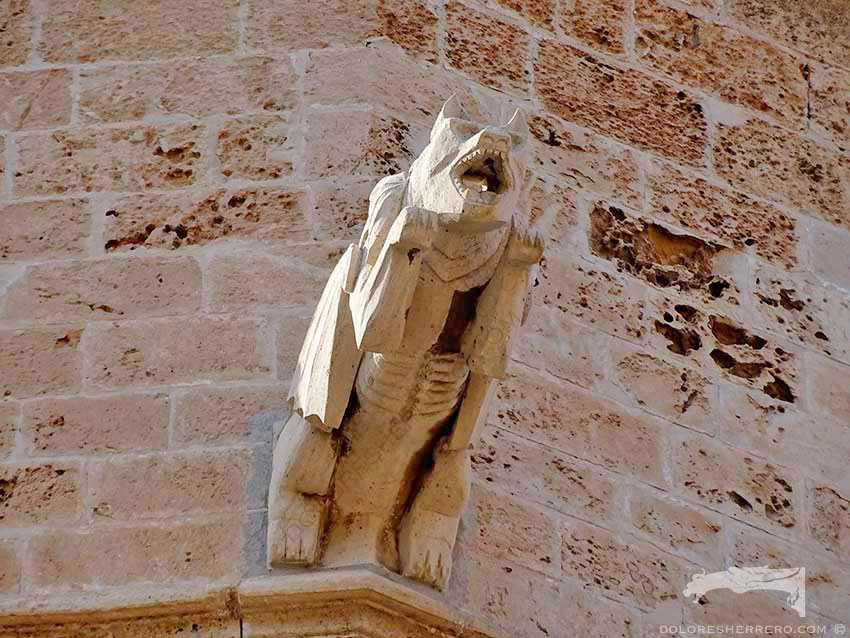
As we always say, fieldwork allows us to see that the stone ‘speaks’ and that it reveals to us, through its shape, texture, wear and tear or style, an era with its artistic modalities, its mood and its ways of thinking and living. Contemplating and observing the gargoyles up close: each of their parts, each gesture, each crack, each shape and colour of the constantly changing stone, is an authentic and marvellous learning experience for gargoyle lovers.
Today we have taken a journey through the sculpture. We have invited you to ‘listen’ to one of these wonderful sculptors who have left us some of the fascinating and imaginative gargoyles that stand out from our architecture.
Our most sincere thanks to Joan Roig for his generosity, for his words, for passing on his knowledge and, of course, for the treasure he has left us: his impressive gargoyles. A legacy for posterity that forms and will form part, we hope for many centuries to come, of the artistic heritage of Mallorca and of our country.
Thank you, Joan.


Doctor of Art History and researcher specializing in the study of gargoyles.
I am Dolores Herrero Ferrio, and my thesis, “An Approach to the Study of Gargoyles of Gothic Cathedrals in Castilla and León”, is dedicated to the study of these fascinating figures.
If you like gargoyles and art history, you will also enjoy my book, “The Gargoyle and Its Iconography,” a book I have written with great care for those interested in the world of gargoyles.
I have created my own Encyclopedia of Gargoyles, a Gargopedia to share with you, where you will discover all the secrets and wonders of these enigmatic sculptures.
I hope you enjoy this Gargopedia as much as I have enjoyed creating it, and remember that each gargoyle has a story to tell, and here you will discover them all.
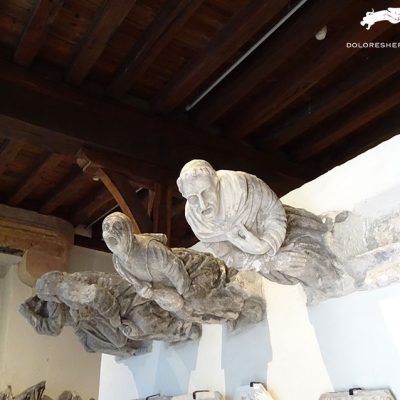 Gargoyles as Works of Art: From Architecture to Museums
Gargoyles as Works of Art: From Architecture to Museums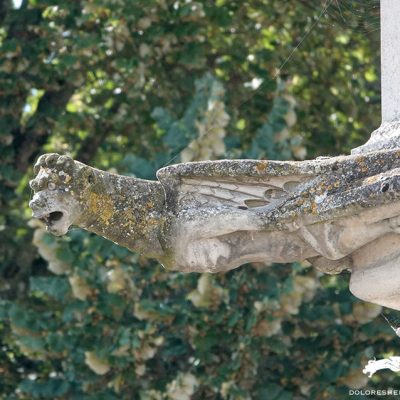 Gargoyles Encapsulating Symbols and Meanings
Gargoyles Encapsulating Symbols and Meanings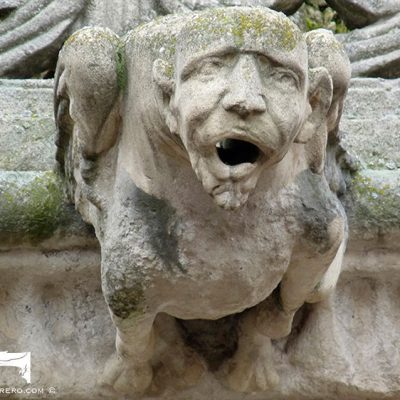 Gargoyles and Expressiveness. A Look at Their Visual Power in Sculptural Art
Gargoyles and Expressiveness. A Look at Their Visual Power in Sculptural Art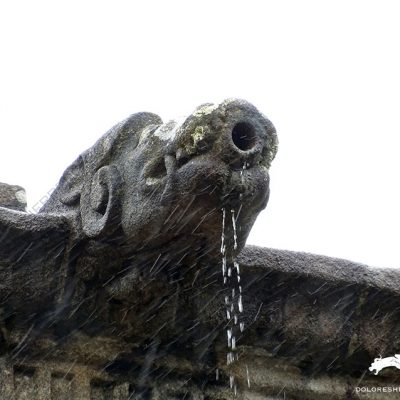 Gargoyles: Definition and Function in Medieval Architecture
Gargoyles: Definition and Function in Medieval Architecture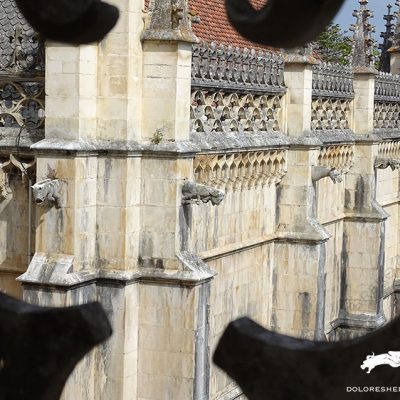 Gargoyles and Their Typologies: An Introduction to Their Multiple Forms
Gargoyles and Their Typologies: An Introduction to Their Multiple Forms